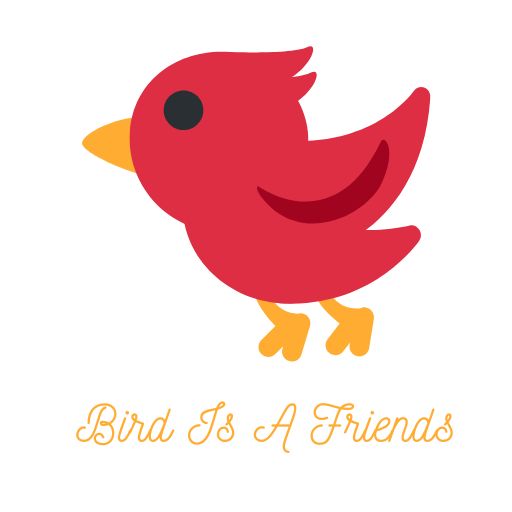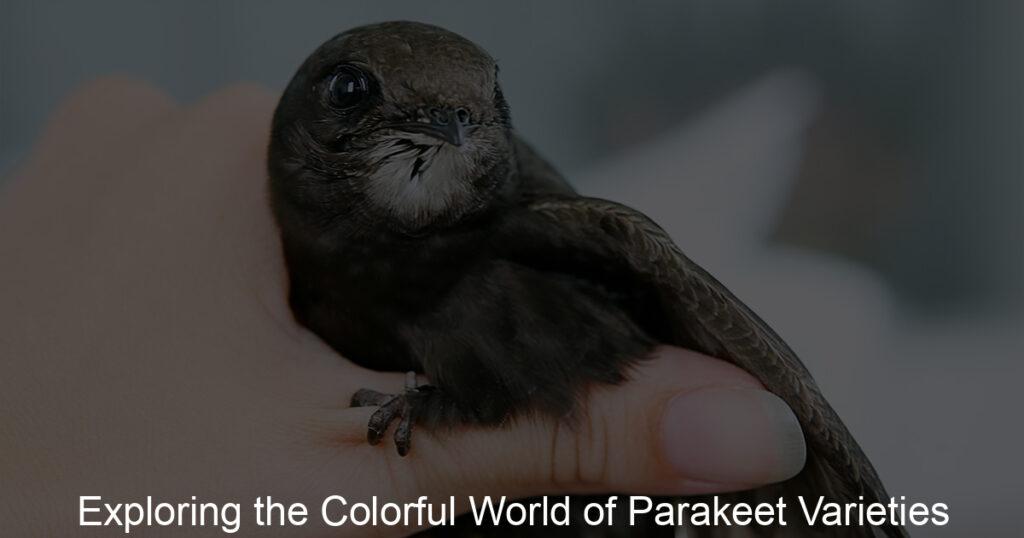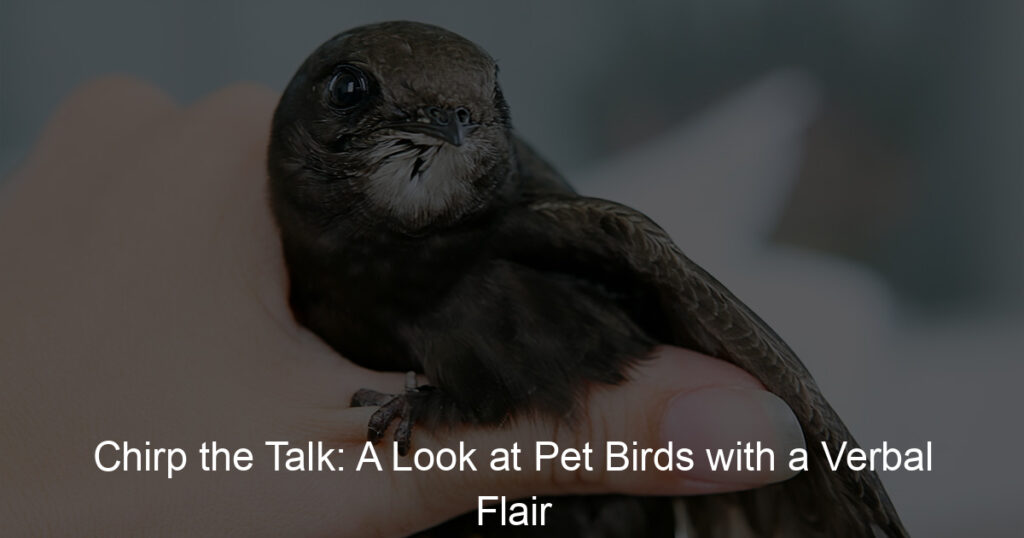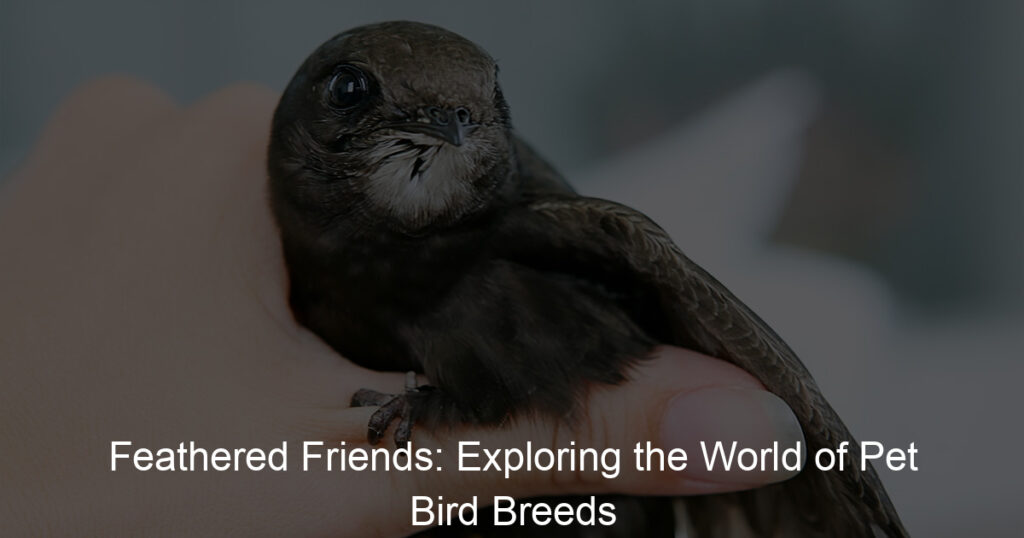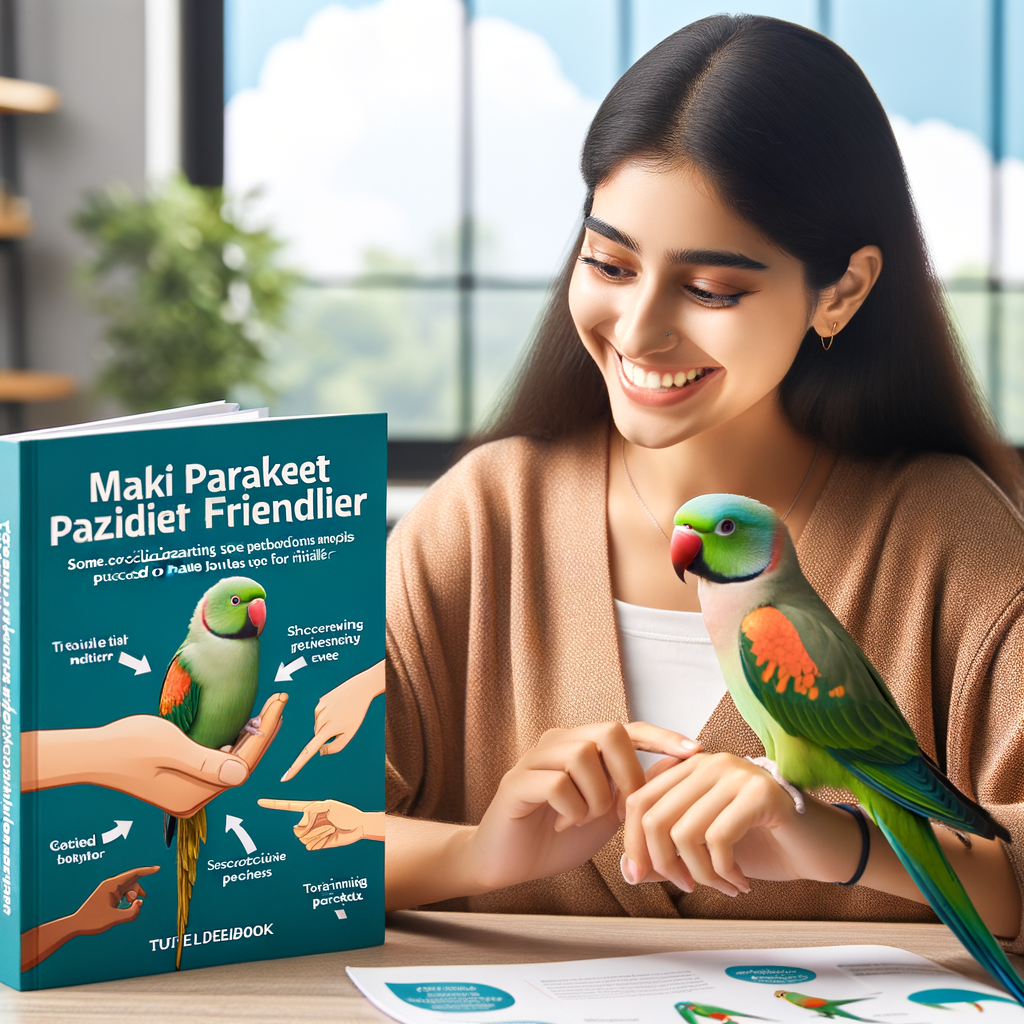
Introduction to Parakeet Socialization
Parakeets, also known as budgies, are sociable creatures by nature. They thrive in environments where they can interact and communicate. This article will delve into the importance of socializing your parakeet and understanding their behavior. Let’s explore these topics in more detail.
- Importance of Socializing Your Parakeet
- Understanding Parakeet Behavior
Parakeets are social birds that enjoy the company of their kind in the wild. In captivity, they require the same level of interaction, either with other birds or their human caretakers. Socializing your parakeet is crucial for their mental and emotional well-being. A well-socialized parakeet is happier, healthier, and more likely to engage in play and exploration.
Without adequate socialization, parakeets can become lonely and depressed, leading to a decline in their health and quality of life. Therefore, it’s essential to spend quality time with your pet, engage them in stimulating activities, and provide them with toys to keep them entertained.
Understanding your parakeet’s behavior is key to successful socialization. Parakeets communicate through a variety of ways such as chirping, body language, and feather fluffing. By paying close attention to these behaviors, you can learn to understand what your bird is trying to communicate.
For instance, a content parakeet will often sing or chirp, while a scared or stressed bird may puff up its feathers or bob its head. Recognizing these behaviors can help you respond appropriately to your bird’s needs and foster a stronger bond.
In the following sections, we will delve deeper into tips and techniques for making your parakeet more sociable, training your parakeet, and ensuring their overall health and happiness. Stay tuned!
Friendly Bird Tips: Making Your Parakeet More Sociable
Parakeets are known for their sociable nature and love for interaction. However, just like humans, they also need to feel comfortable and engaged in their environment. Here are some tips to make your parakeet more sociable:
- Creating a Comfortable Environment
Parakeets, like all birds, are sensitive to their surroundings. A comfortable, safe, and stimulating environment is essential for their social behavior. Here are some tips:
- Ensure the cage is spacious enough for your parakeet to move around comfortably.
- Provide a variety of perches at different heights and thicknesses to mimic a natural environment.
- Keep the cage in a quiet, well-lit area of your home, away from drafts and direct sunlight.
- Maintain a clean cage by regularly removing droppings and replacing food and water.
Remember, a comfortable bird is a happy bird, and a happy bird is more likely to be sociable.
- Introducing New Toys and Activities
Parakeets are intelligent birds that need mental stimulation to stay happy and sociable. Introducing new toys and activities can help keep them engaged and encourage social behavior. Here are some ideas:
- Rotating toys: Parakeets can get bored with the same toys. Try rotating them every week to keep things interesting.
- Interactive toys: Toys that require your parakeet to solve a puzzle or perform a task can provide mental stimulation.
- Music: Many parakeets enjoy music. Try playing soft, soothing tunes to your bird.
- Mirrors: A mirror can provide companionship for a single parakeet, but be careful as some birds can become too attached to their reflection.
Remember, the goal is to keep your parakeet engaged and stimulated. A bored bird can become withdrawn and less sociable.
By creating a comfortable environment and introducing new toys and activities, you can help your parakeet become more sociable. Remember, every bird is unique, so it’s important to observe your parakeet’s behavior and adjust your approach as needed.
Training Your Parakeet: Techniques and Tips
Training your parakeet can be a rewarding experience. It’s not just about teaching them tricks, but also about understanding their behavior. Let’s delve into the fascinating world of parakeet behavior and learn how to recognize signs of stress or discomfort and interpret their vocalizations.
Understanding Parakeet Behavior
Parakeets are intelligent and social animals. They communicate their feelings and needs through a variety of signs and sounds. By understanding these, you can create a more comfortable and stimulating environment for your feathered friend.
- Recognizing signs of stress or discomfort
Parakeets show stress or discomfort in several ways. They may become quiet, lose their appetite, or exhibit unusual behavior like feather plucking. If your parakeet is showing any of these signs, it’s important to identify the cause and address it promptly. Changes in their environment, such as a new cage or a change in their diet, can often be the culprit.
- Interpreting parakeet vocalizations
Parakeets use a variety of sounds to communicate. A happy parakeet will often chirp or sing, while a scared or angry parakeet may squawk loudly. By paying attention to the sounds your parakeet makes, you can better understand their mood and needs.
Here’s a simple table to help you interpret your parakeet’s vocalizations:
| Vocalization | Meaning |
|---|---|
| Chirping | Happy, content |
| Squawking | Scared, angry |
| Quiet | Unwell, stressed |
Remember, every parakeet is unique and may communicate differently. Spend time with your bird, observe their behavior, and soon you’ll be able to understand their unique language.
Effective Training Techniques
Training your parakeet can be a rewarding experience for both you and your feathered friend. It not only helps in enhancing your bond but also in ensuring your parakeet’s overall well-being. Let’s delve into two effective training techniques that can make this process smoother and more enjoyable.
- Using Positive Reinforcement
Positive reinforcement is a powerful training tool. It involves rewarding your parakeet for demonstrating a desired behavior. This reward can be a favorite treat, a gentle stroke, or verbal praise. The key is to immediately reward the behavior you want to encourage, so your parakeet associates it with something positive.
For instance, if you’re teaching your parakeet to step onto your finger, reward it with a treat as soon as it does so. This will help your bird understand that stepping onto your finger leads to a tasty treat, encouraging it to repeat the behavior.
- Gradual Introduction to New Experiences
Parakeets, like most birds, can be wary of new experiences. It’s essential to introduce new things gradually to avoid causing stress or fear. This can be a new toy, a new cage, or even a new person.
Start by placing the new item or person at a distance from your parakeet and gradually bring it closer over time. This allows your bird to observe and get used to the new thing in its own time. Remember, patience is key when introducing your parakeet to new experiences.
In conclusion, using positive reinforcement and gradually introducing new experiences are effective ways to train your parakeet. They not only help in building trust but also in creating a positive and enriching environment for your bird.
Bird Socializing Techniques: Encouraging Interaction
One of the most rewarding aspects of owning a parakeet is the opportunity to interact with your feathered friend. However, this interaction doesn’t happen instantly; it requires time, patience, and the right techniques. In this section, we will explore two key methods to encourage interaction: introducing other birds and encouraging human interaction.
- Introducing other birds
Parakeets are social creatures by nature. They thrive in the company of their own kind, and introducing other birds can significantly improve their social skills. However, this process must be done carefully to avoid stress and conflict.
Start by housing the new bird in a separate cage within sight of your parakeet. This allows both birds to get used to each other’s presence without the risk of territorial disputes. After a few days, you can start to introduce supervised play sessions. Over time, these sessions can be extended until the birds are comfortable in each other’s company.
Remember, every bird is unique, and some may take longer to adjust than others. Patience and consistency are key to successful bird socialization.
- Encouraging human interaction
While interacting with other birds is important, building a bond with their human caretakers is equally crucial for a parakeet’s social development. Here are some tips to encourage human interaction:
- Start slow: Begin with short, daily sessions where you talk softly to your bird. This helps them get used to your voice and presence.
- Use treats: Offering treats from your hand can help build trust. Make sure to use bird-safe treats, like small pieces of fruit or birdseed.
- Respect their space: Never force interaction. If your bird seems uncomfortable, give them space and try again later.
- Consistency is key: Regular, consistent interaction is the best way to build a strong bond with your bird.
Remember, building a relationship with a parakeet takes time and patience. But with the right approach, you can encourage interaction and create a strong, rewarding bond with your feathered friend.
Parakeet Care: Ensuring a Healthy and Happy Bird
One of the most important aspects of parakeet care is ensuring they have a healthy diet and proper nutrition. This is crucial for their overall well-being and happiness.
Diet and Nutrition
Just like humans, parakeets need a balanced diet to stay healthy. This includes a variety of foods and plenty of fresh water. Let’s delve into these two key aspects:
- Feeding your parakeet a balanced diet
- Understanding the importance of water
Parakeets thrive on a diet that includes a mix of seeds, fruits, vegetables, and grains. Seeds should make up about 50% of their diet, with the rest being a mix of fruits, vegetables, and grains. It’s also important to provide them with a cuttlebone or mineral block for calcium and other essential minerals. Remember, variety is key to a balanced diet. Avoid feeding them avocado, chocolate, or anything with caffeine as these can be harmful to them.
Water is just as important as food for your parakeet. They need fresh, clean water every day. The water should be changed daily to prevent the growth of bacteria. It’s also a good idea to have a backup water dish in case one gets dirty or tipped over. Hydration is essential for your parakeet’s health, aiding in digestion and helping to keep their feathers clean.
In conclusion, a balanced diet and plenty of fresh water are the cornerstones of good parakeet care. By providing these, you can help ensure your parakeet stays healthy and happy.
Health and Wellness
Keeping your parakeet healthy and happy is a top priority. This involves recognizing signs of illness and scheduling regular vet check-ups. Let’s delve into these aspects in more detail.
- Recognizing Signs of Illness
Parakeets are good at hiding their illnesses, which is why it’s crucial to know the signs. Changes in behavior, appearance, or eating habits can all indicate a problem. Here are some signs to look out for:
| Signs | Description |
|---|---|
| Change in Appetite | If your parakeet is eating less or more than usual, it could be a sign of illness. |
| Change in Droppings | Unusual color, consistency, or frequency of droppings can indicate a health issue. |
| Change in Behavior | Signs of lethargy, aggression, or other unusual behaviors can suggest your bird is not feeling well. |
Remember, if you notice any of these signs, it’s best to consult a vet immediately.
- Regular Vet Check-ups
Regular vet check-ups are essential for your parakeet’s health. These visits allow the vet to detect any potential health issues early, making treatment more effective.
It’s recommended to have your parakeet checked at least once a year. However, if your bird is older or has health issues, more frequent visits may be necessary. During these check-ups, the vet will typically examine your bird’s weight, feathers, eyes, beak, and overall health.
Remember, a healthy parakeet is a happy parakeet. By recognizing signs of illness early and scheduling regular vet visits, you can ensure your feathered friend stays in the best possible health.
Making Your Parakeet Friendly: Building Trust and Bonding
Building a strong bond with your parakeet is a rewarding experience. It not only enhances your relationship with your pet but also contributes to their overall happiness and well-being. Here, we’ll explore two key strategies to make your parakeet friendly and build a strong bond: spending quality time with your parakeet and teaching them to step up.
- Spending Quality Time with Your Parakeet
Spending quality time with your parakeet is the first step towards building a strong bond. Parakeets are social creatures and thrive on interaction. Make sure to dedicate at least 15-30 minutes a day to play and interact with your parakeet. This can involve talking to them, letting them out of their cage to explore, or simply sitting near their cage while you read or work.
Remember, it’s not about the quantity of time, but the quality. Make sure your interactions are positive and stress-free for your bird. Over time, your parakeet will start to associate your presence with positive experiences, leading to a stronger bond.
- Teaching Your Parakeet to Step Up
Teaching your parakeet to step up onto your finger is a significant milestone in your bonding journey. This simple action builds trust between you and your bird and can be a stepping stone to more advanced training.
To teach your parakeet to step up, start by placing your finger gently against their lower chest and say “step up”. Be patient, as it might take a few tries before your bird understands what you want. Always reward your parakeet with praise or a small treat when they successfully step up. This positive reinforcement will encourage them to repeat the behavior in the future.
Remember, building trust and bonding with your parakeet takes time and patience. But with consistent effort, you’ll soon have a friendly and trusting feathered friend.
| Key Strategies | Description |
|---|---|
| Spending Quality Time | Interact with your parakeet for at least 15-30 minutes a day. Ensure the interactions are positive and stress-free. |
| Teaching to Step Up | Teach your parakeet to step up onto your finger. Use positive reinforcement to encourage this behavior. |
Parakeet Interaction: Encouraging Play and Exploration
Parakeets are lively, intelligent birds that thrive on interaction and play. Providing opportunities for play and exploration is crucial for their mental and physical health. Here are some ways you can encourage these behaviors in your pet parakeet.
- Providing a Variety of Toys
Parakeets are naturally curious and love to explore their surroundings. Toys can provide mental stimulation and keep them occupied. It’s important to offer a variety of toys to keep your parakeet interested and engaged. These can include:
- Bells and mirrors
- Swings and ladders
- Chew toys made of safe, non-toxic materials
- Puzzle toys that require problem-solving skills
Remember to rotate the toys regularly to keep your parakeet’s environment exciting and new. Also, ensure the toys are safe and suitable for your bird’s size.
- Encouraging Flight and Exercise
Flight is a natural behavior for parakeets and a great form of exercise. It’s important to provide opportunities for your parakeet to fly, especially if it lives in a cage. Here are some tips:
- Ensure your parakeet’s cage is large enough for it to fly short distances.
- Allow your parakeet out of its cage daily in a safe, bird-proofed room.
- Encourage flight by placing perches at different heights in the cage or room.
Regular exercise helps keep your parakeet healthy and can also reduce behavioral problems like feather plucking and excessive noise. Remember, a happy parakeet is an active parakeet!
In conclusion, encouraging interaction, play, and exploration is a key part of parakeet care. By providing a variety of toys and opportunities for flight, you can help ensure your parakeet is happy, healthy, and engaged.
Bird Training Tips: Teaching Tricks and Commands
Training your parakeet can be a fun and rewarding experience. Not only does it provide a great way for you to bond with your bird, but it also helps to keep their minds active and engaged. In this section, we will explore some tips and tricks for teaching your parakeet to talk and perform simple tricks.
-
Teaching Your Parakeet to Talk
Parakeets are known for their ability to mimic human speech. Here are some steps you can follow to teach your parakeet to talk:
- Start with simple words: Begin with words like ‘hello’, ‘goodbye’, or your bird’s name. Repeat these words frequently to your parakeet.
- Use a clear and consistent tone: Parakeets respond best to a clear and consistent tone of voice. Make sure to use the same tone and inflection each time you say the word.
- Practice regularly: Consistency is key when teaching your parakeet to talk. Try to practice for a few minutes each day.
- Be patient: Remember, teaching a bird to talk takes time. Don’t get discouraged if your parakeet doesn’t start talking right away.
-
Training Your Parakeet to Perform Simple Tricks
Training your parakeet to perform tricks can be a fun way to interact with your bird. Here are some tips to get you started:
- Start with simple tricks: Begin with easy tricks like ‘step up’ or ‘turn around’. Once your bird has mastered these, you can move on to more complex tricks.
- Use positive reinforcement: Always reward your bird with a treat or praise when they perform the trick correctly. This will encourage them to repeat the behavior.
- Be consistent: Practice the trick regularly and be consistent with your commands and rewards.
- Be patient: Just like with teaching your bird to talk, training them to perform tricks takes time. Don’t get discouraged if they don’t get it right away.
In conclusion, training your parakeet can be a rewarding experience for both you and your bird. Remember to be patient, consistent, and always use positive reinforcement. Happy training!
Socializing Pet Birds: Case Studies and Success Stories
Let’s take a closer look at some real-life examples of pet birds who have successfully become more social. These stories highlight the power of patience, training, and understanding in helping our feathered friends overcome their fears and become more sociable.
-
Case Study: From Shy to Social – A Parakeet’s Transformation
Meet Charlie, a shy parakeet who was initially terrified of human interaction. His owners, the Smith family, were determined to help Charlie come out of his shell. They started by placing Charlie’s cage in a busy part of the house, so he could get used to the sounds and sights of human activity.
Next, they spent time each day talking softly to Charlie and offering him treats from their hands. It took several weeks, but eventually, Charlie began to respond. He started chirping back when spoken to and even began to step onto the Smiths’ fingers. Today, Charlie is a sociable and interactive member of the family, proving that with patience and consistent effort, even the shyest bird can learn to trust and interact with their human caretakers.
-
Success Story: How Training and Patience Helped a Parakeet Overcome Fear
Next, let’s look at Bella, a parakeet who was once terrified of everything. Bella’s owner, Mrs. Johnson, used a combination of training techniques and a lot of patience to help Bella overcome her fears.
First, Mrs. Johnson made sure Bella’s cage was a safe and comfortable space, filled with toys and treats. She then began to slowly introduce Bella to new experiences, always making sure Bella felt safe and secure. This included playing soft music, introducing new toys, and even taking Bella out of her cage to explore the house under close supervision.
It took time, but Bella gradually began to show less fear and more curiosity. Today, Bella is a confident and adventurous bird who loves to explore and interact with her surroundings. Her story is a testament to the power of patience and understanding in helping a pet bird become more sociable.
These stories highlight the importance of patience, understanding, and consistent training in helping pet birds become more sociable. Remember, every bird is unique and will socialize at their own pace. The key is to provide a safe and comfortable environment, offer positive reinforcement, and be patient as your bird learns to trust and interact with you.
